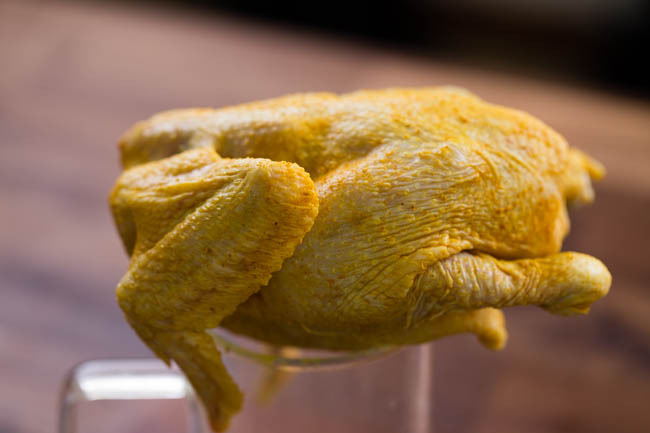

Color plays an important part in determining what foods we find enticing and delectable to our appetite. Our sensories can affect how healthy we see foods also. Chicken with yellow skin is often seen as a sign of healthy food and good quality chicken. Some whole chickens and skin on chicken parts we see at our grocers are from birds with a yellow skin color because that’s what some people want to see.
The color of a chicken’s skin and fat can range from white to yellow. There are two skin colors in chickens, white skin from the Red Jungle Fowl lines and the yellow skin from the Grey Jungle Fowl most likely. Recent genetic testing has shown that they are from separate lineages. The white skinned birds take in carotenoids but they don’t express the coloring in their skin like the yellow skin do.
The yellow skin and fat is created from the chicken’s diet and it isn’t necessarily a sign of quality. Grass fed birds and free range chickens usually have deeper colored yellow fat than their grain fed counterparts. Grass fed and pastured poultry are typically more exposed to food that has more coloring carotenoids.
Along with intensive studies for feed to create yellowness in skin there are more practices to create a yellow skinned bird ranging from feed to processing. When some commercial butchers process birds they can use what is called a soft scald which is about 127 F for 90 seconds because this kind of scald does not remove the cuticle and reduce coloring. There are scales used to measure the yellowness of the skin to properly gauge color. Many methods have been used and are still utilized to increase and maintain yellowness because of its commercial importance.
 Contact Jaguza Support
Contact Jaguza Support